Mastering Math Formulas: A Guide for Young Learners
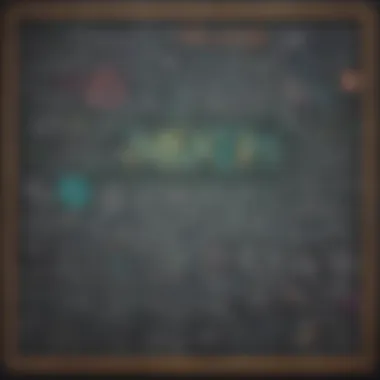

Intro
Understanding math formulas can feel overwhelming for many young learners. It is essential to approach these concepts step by step. This guide is crafted to help children aged 5 to 12 gain confidence in solving math formulas. By explaining variables, types of formulas, and practical applications in a clear and engaging manner, we aim to foster a more positive attitude toward mathematics.
The Importance of Solving Formulas
Solving math formulas is not just about finding the right answer. It teaches critical thinking and problem-solving skills. When children understand how to manipulate formulas, they also develop a sense of logic and reasoning. This foundation is essential for many future subjects, including science and technology.
By recognizing how formulas appear in real life, learners can appreciate the utility of mathematics. Examples can include how they relate to budgets, measurement in cooking, or understanding distance and speed when cycling.
Creative Activities
Engaging children with creative activities is a great way to reinforce their understanding of math formulas. Here are some attractive ideas:
- Craft Ideas: Simple craft project which link art into math applications. Create a formula tree with colorful leaves, where each leaf contains a formula to practice.
- Step-by-Step Guides: For the formula tree:
- Educational Value: These activities offer playful and practical approaches to understanding concepts, making math less intimidating and more fun.
- Gather leaves or paper cuts.
- Write different formulas on them.
- Decorate with colors and hang them.
Fun Quizzes
To further engage young minds, quizzes can be utilized to test knowledge in a fun way.
- Quiz Topics: Areas can cover addition, subtraction, free multiplication, percentages, and basic algebra.
- Question Types: Varietes of question types can include multiple-choice questions, fill-in-the-blanks, and matching formulas with their real-world applications.
- Knowledge Reinforcement: Quizzes help reinforcement as kids revise the materials in stimulating ways while learning retains effectively.
Fact-Based Articles
Access to articles that explore math concepts can solidify learning.
- Topics: Include subjects such as 'What Are Variables?', 'Everyday Formulas', and 'Fun with Geometry'.
- Engaging Content: These articles present ideas simply and authentically. Each piece motivates kids to continue discovering the relationships math has with other subjects in daily life.
- Additional Resources: Young learners might explore more on educational platforms, Wikipedia for basics or visits to Britannica can offer stacks of additional documents.
Learning math can feel like a journey. Every step is crucial for deeper understanding and longer-lasting knowledge, helping build foundational skills for future academic success.
Determining ways like fun quizzes and creative activities enables children to relate math to everyday actions. Whatever the pathway taken, it is important to encourage curiosity and motivate problem solving from an early age.
Understanding Math Formulas
Understanding math formulas is essential for young learners. It lays groundwork for a variety of mathematical skills they will use in school and beyond. When students understand formulas, they gain confidence in tackling math challenges. This area of study helps them see math not just as numbers in a book, but as a tool they can apply in real life. Young learners that grasp how to solve different formulas can approach mathematics with more assurance.
What is a Math Formula?
A math formula is a special method of expressing a relationship between different values. For example, in many cases, formulas are used to determine the area of a shape or the relationship between speed, distance, and time. They often include letters and symbols. Understanding how these formulas work helps children to solve various math problems effectively.
Formulas are powerful because they summarize complex mathematical ideas. Educators often emphasize at an early age that mastering math formulas can significantly simplify problem-solving.
Types of Math Formulas
There are several important types of formulas that young learners should know. Each serves a unique purpose and is applicable in different situations.
Algebraic Formulas
Algebraic formulas mainly deal with equations. They usually include variables and coefficients. A well-known algebraic formula is the quadratic equation, which looks like this: ax² + bx + c = 0. Understanding this formula enables learners to find various solutions to algebra equations.
The distinctive feature of algebraic formulas is the use of variables. This allows students to solve for unknown numbers in a flexible way. Algebra offers a solid angle for learning logical thinking. Dealing with such formulas can be beneficial because it cultivates problem-solving skills that go beyond just numbers. However, when first learning this, students may feel overwhelmed because of unknowns and the abstract nature of algebra.
Geometric Formulas


Geometric formulas relate to shapes and their properties. For example, the formula for the area of a rectangle is Length x Width. Young learners step into the world of geometry where they see how shapes fit into our physical reality.
The key characteristic here is that these formulas help with visual understanding. Geometry prepares students for real-world applications, such as architecture and design. Additionally, the capabilities to measure and determine area foster critical thinking. While they often need visualization tools or diagrams, exploring geometric formulas provides concrete examples learners can understand and use in real life.
Arithmetic Formulas
Arithmetic formulas focus on basic math operations. They deal with addition, subtraction, multiplication, and division. A simple example is the formula for calculating the average, which is the sum of numbers divided by how many numbers there are.
One key aspect of arithmetic formulas is their simplicity. They form the basis of other more complicated mathematics. Because these formulas are foundational in arithmetic, they make an excellent starting point for young learners. Mastering these basic operations sets the stage for advanced math topics in following years. However, students sometimes mistakenly skip steps. This can lead to errors unless they stay organized and practice consistently.
The Role of Variables
Variables are fundamental to mathematics and understanding how to use them is crucial for solving math formulas. This section sheds light on their significance. Knowing about variables makes math less intimidating and exposes learners to basic Algebraic concepts. When kids grasp the essence of variables, they encounter more possibilities in math, opening pathways for deeper learning.
Defining Variables
A variable represents a quantity that can change or vary. It is often denoted by letters, such as x, y, or z. In its simplest form, a variable allows students to understand unknown values within mathematical equations. For instance, in the equation x + 5 = 10, the variable x signifies a number we need to find that, when added to five, results in ten. This idea is vital as it teaches children to think critically about quantities and their relations.
Educators can present variables through practical examples, showcasing how changing the variable can affect the outcome. For students, visual aids like diagrams or simple physical objects might deepen their understanding. Through engaging exercises, such as substituting different values for variables, they experience firsthand the connection between variables and outcomes.
Understanding Constants
Constants contrast with variables in that their values remain fixed and do not change in a given problem. For example, in the formula for the area of a rectangle, length and width are often stated as constants for computation once the numbers are provided.
A solid grasp of constants helps students realize the foundational components of formulas. Being able to differentiate between a variable and a constant helps them to dissect equations properly, making the problem-solving process much more straightforward.
To illustrate the significance of constants, one could represent equations visually or symbolically. This concept aids the understanding of how each part belongs in various types of formulas, reinforcing basic math principles.
"Understanding both variables and constants equips students with a toolkit for engaging with diverse mathematical challenges."
Promoting knowledge of variables and constants fosters greater confidence in using formulas. By achieving clarity in these basic concepts, young learners could explore more complex math challenges with ease and excitement.
Steps to Solve Math Formulas
Understanding the steps to solve math formulas is essential for learners. This process helps alleviate some of the confusion that math can create, especially for young children. Breaking down formulas into clear, actionable steps makes the subject more relatable and enjoyable. Encouraging children to follow these steps fosters their independent problem-solving skills. This section outlines four crucial steps to solving math formulas effectively.
Identifying the Formula
The first step in solving any math equation is identifying the correct formula to apply. Math formulas vary in their application based on the problem at hand. For example, if you want to find the area of a rectangle, you should use the formula Area = Length × Width. Recognizing which formula fits a problem requires practice and exposure to various types of problems. Sometimes, it might be necessary to look at examples.
To hone this skill:
- Review common formulas frequently.
- Use visual aids to associate problems with their formulas.
Common Math Formulas Explained
Common math formulas serve as the foundations upon which a variety of mathematical problems are built. Understanding these formulas not only enhances calculation skills but also helps young learners grasp how mathematics applies to everyday situations. Simple formulas reveal hidden patterns in shapes and help describe the world around us. By dissecting common formulas, children can illustrate and encourage critical observation of their environment.
Being familiar with essential formulas like those of areas, perimeters, and volumes empower students. These formulations demystify complex mathematical relationships. In this section, we explore the essential math formulas that every young learner should familiarize themselves with to deepen their understanding of math and its practical uses.
Area of a Rectangle
The area of a rectangle is determined by a straightforward formula:
Area = length × width.
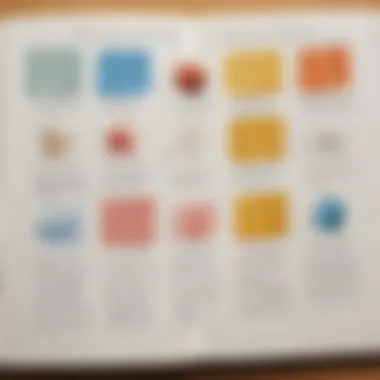
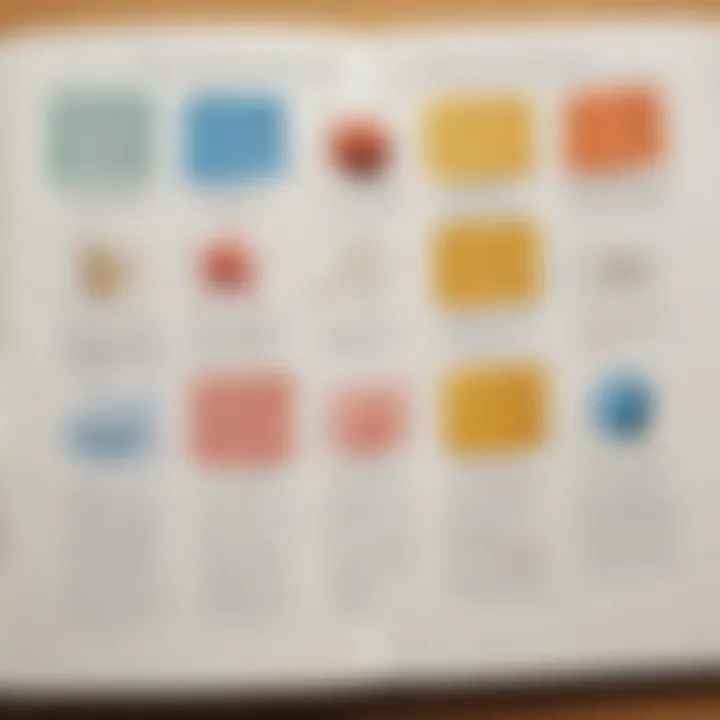
This formula calculates the surface space on a flat shape called a rectangle. By giving two simple measurements—the length and the width—students find out how much space is inside it.
For example, if a rectangle measures 4 meters in length and 3 meters in width, we would calculate:
- Area = 4 m × 3 m = 12 m²
Thus, the area is twelve square meters. Understanding this concept is crucial since rectangles appear frequently, from classrooms to rooms in houses. It showcases how numbers align with the physical world.
Circumference of a Circle
The circumference of a circle is another vital calculation. The formula for this track-like path around the circle is:
Circumference = 2πr or Circumference = πd.
Here, r represents the radius, and d represents the diameter of the circle. Knowing how to use this formula allows students to comprehend the circle's boundary.
For instance, if a circle has a radius of 5 centimeters:
- Circumference = 2 × π × 5 cm ≈ 31.4 cm
Recognizing this connection enhances both feeling and working with curves, applicable in numerous designs and nature’s forms.
Volume of a Cube
The volume describes how much space a three-dimensional object occupies. For a cube, the volume can be calculated with the formula:
Volume = side × side × side
This is often simplified to Volume = side³. For example, if each edge of a cube is 3 inches, we would calculate its volume as:
- Volume = 3 in × 3 in × 3 in = 27 in³
This indicates that it holds twenty-seven cubic inches inside it. Mastering this concept includes the ability to gauge spaces involving products and containers in everyday life.
Each common math formula serves as a tool for unraveling larger mathematical principles, triggering curiosity in young minds as they explore numbers and dimensions.
Practical Applications of Formulas
Understanding the practical applications of formulas significantly enriches the learning experience for young learners. Math is not just confined to textbooks; it intertwines with virtually every aspect of daily life. Whether it's figuring out how much pizza each person gets or understanding how shadows change with the sun's position, formulas guide decision-making in real situations. By witnessing firsthand how math applies to everyday tasks, children can develop a genuine appreciation for the subject.
Using Math in Real Life
Children experience math daily, often without realizing it. Simple activities, such as cooking, shopping, and planning can greatly benefit from understanding math formulas. Here are some examples:
- Cooking: When measuring ingredients, kids can use fractions to ensure proper amounts. If a recipe calls for 1/2 cup of milk, children will learn to measure accurately, reinforcing both math skills and culinary practices.
- Shopping: Calculating prices during shopping trips helps children learn about percentages and budgeting. If a toy costs $20 but is 25% off, they can apply a discount to find the sale price.
- Planning: Whether constructing a model or organizing a party, understanding space, time, and materials involves using geometric and arithmetic formulas.
Thus, practical applications show that math extends beyond schoolwork into the realm of personal experiences.
Math in Science
Mathematics is the foundation of scientific discovery. For young learners, grasping how to use formulas in scientific contexts enriches their understanding of the world. Here are essential areas where math plays a vital role in science:
- Physics: Formulas like F = ma demonstrate the principles behind force, mass, and acceleration. Understanding such basic concepts helps kids comprehend everyday occurrences like riding a bike or playing soccer.
- Chemistry: In chemistry, formulas help in determining chemical reactions. Kids learn how to balance equations, an essential leaning that builds their critical thinking skills.
- Biology: Mathematical formulas are also crucial for calculating growth rates, population estimations, and statistical data. For instance, if measuring the growth of plants under different conditions, they can gather data and formulate conclusions based on numbers.
Overall, math equips children with tools to analyze and make sense of the natural world effectively.
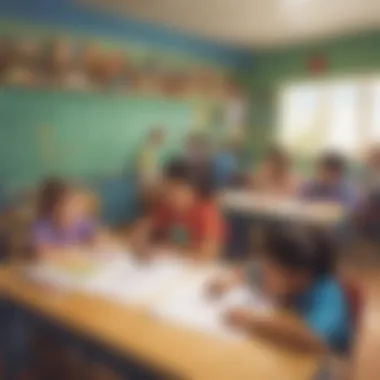
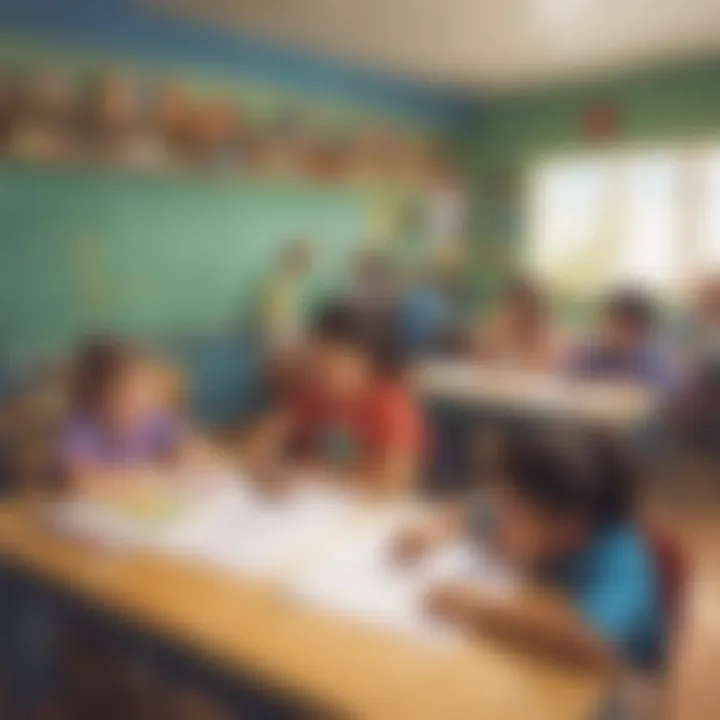
Understanding Financial Concepts
Introducing basic financial literacy at a young age integrates mathematics meaningfully. Learning about managing money, budgeting, saving, and spending will secure practical math skills that stay relevant for life. Children can explore financial concepts in various ways:
- Budgeting: Students can learn how to create a simple budget based on a weekly allowance. Understanding income versus expenses, along with savings, teaches valuable responsibility.
- Saving: Using formulas to determine interest rates helps children understand their savings account’s growth. Learning how compounding interest works allows them to see tangible results over time.
- Investing: Introduce basic principles of investing—whether through stocks or bonds—allows young learners to appreciate long-term financial planning. They can learn about risk, reward, and the math behind managing investments efficiently.
In this regards, practical applications of formulas enable solid financial literacy and responsible money management. Each application holds gravity, as commitment to mathematics consolidates in real-world experiences.
Recognizing how math impacts everyday situations encourages kids to build positive attitudes towards the subject.
Common Mistakes in Solving Math Formulas
Mistakes can happen when solving math formulas. Arithmetic tends to get tricky, especially for young learners. Highlighting common mistakes is vital here. Recognizing these pitfalls can aid in preventing errors. With practice, simple congratulations can bolster children's confidence in their math skills.
Overlooking Parentheses
Parentheses play a crucial role in math equations. If the parentheses are ignored, calculations can result in incorrect answers. This aspect is known as the order of operations—solving problems in a specific order.
When young learners overlook parentheses, they might miscalculate results. For example, consider the expression: 2 + 3 × (4 - 2). Without handling the parentheses first, a child might incorrectly calculate it as 2 + 3 = 5 and then multiply it with something. The accurate answer follows using the parentheses:1888 2 + 3 × 2, which equals 2 + 6 = 8.
To sum up, teaching this point is vital. Remind students to check for parentheses in every math formula they solve.
Misplacing Decimal Points
Decimal points might seem small, but their placement is significant in math calculations. Misplacing them can change an entire solution. Children often confuse numbers that appear similar due to decimals. For example, treating 2.5 and 25 the same disregards their difference. If a child is doing money-related problems, this mistake can lead to incorrect values.It can cause unnecessary product’s price suggestions if calculated incorrectly a house.
To combat this, reinforce decimal placement practice. Regular drills, combined with geometric understanding, will help kids maintain accuracy. Ask them to read values out loud while solving such problems.
Ignoring Unit Consistency
Unit consistency is essential when performing calculations. Combining different measurement units can lead to confusion and incorrect calculations. For instance, mixing feet with inches in an equation can lead to inaccurate results. If a problem involves converting units, teach children to do that before proceeding with calculations.
It’s helpful to emphasize this in everyday scenarios. Use real-life examples, like baking or shopping, to illustrate the need for consistent units. Whether measuring ingredients or comparing prices, consistent units will ensure accurate outcomes.
Highlighting these mistakes can improve the understanding of math formulas. Young learners can benefit significantly by avoiding such errors and reinforcing correct practices.
Encouraging a Positive Attitude Towards Math
Encouraging a positive attitude towards math is a crucial aspect of helping young learners navigate the world of mathematics. A child’s mindset about math can significantly impact their ability to learn and apply mathematical concepts. By fostering an encouraging environment, caregivers and educators can help children build their confidence and reduce anxiety surrounding mathematical tasks.
Building Confidence Through Practice
Practice is essential for mastering any skill, and math is no exception. When children repeatedly engage with math problems, they begin to recognize patterns and become more confident in their ability to solve challenging formulas. It’s important to guide young learners through gradual steps of complexity. Here are some straightforward strategies:
- Start Simple: Begin with basic formulas and increase difficulty as they gain confidence.
- Set Achievable Goals: Celebrate small victories to encourage progress.
- Tailor Feedback: Give specific, constructive feedback that highlights strengths and offers guidance on areas for improvement.
Encouragement through practice not only primes the brain for retaining information, it also equips children with the tools they need to tackle math successfully.\
Fostering Curiosity in Mathematics
Curiosity is a natural trait in children. It can be harnessed to create a genuine interest in mathematics. Cultivating this curiosity can transform math learning into an exciting adventure rather than a chore. Parents and educators can try these methods:
- Ask Open-Ended Questions: Encourage children to think critically about numbers and formulas.
- Use Real-World Examples: Show how math connects to everyday life, with situations like cooking, budgeting, or science experiments.
- Encourage Exploration: Allow learners to explore formulas without fear of mistakes. Discovery can lead to deeper understanding.
A curious mind will not shy away from challenges. By legitimizing their inquiries and maintaining excitement in learning math, young learners start to see the subject as a tool for exploring the world, rather than merely a series of abstract concepts.
Fostering a love for math starts with instilling confidence and curiosity, creating a foundation for lifelong learning.
Overall, by encouraging a positive attitude towards math, we lay the groundwork for future academic achievement. This mindset can make learning a fulfilling journey rather than an intimidating task.
Mathematics is about understanding, not just memorizing.
Today, as learners expand their knowledge, the skills acquired will open doors to various fields including science, technology, engineering, and mathematics, known as STEM. By developing a solid foundation in solving math formulas, young learners pave the way for future academic success.







